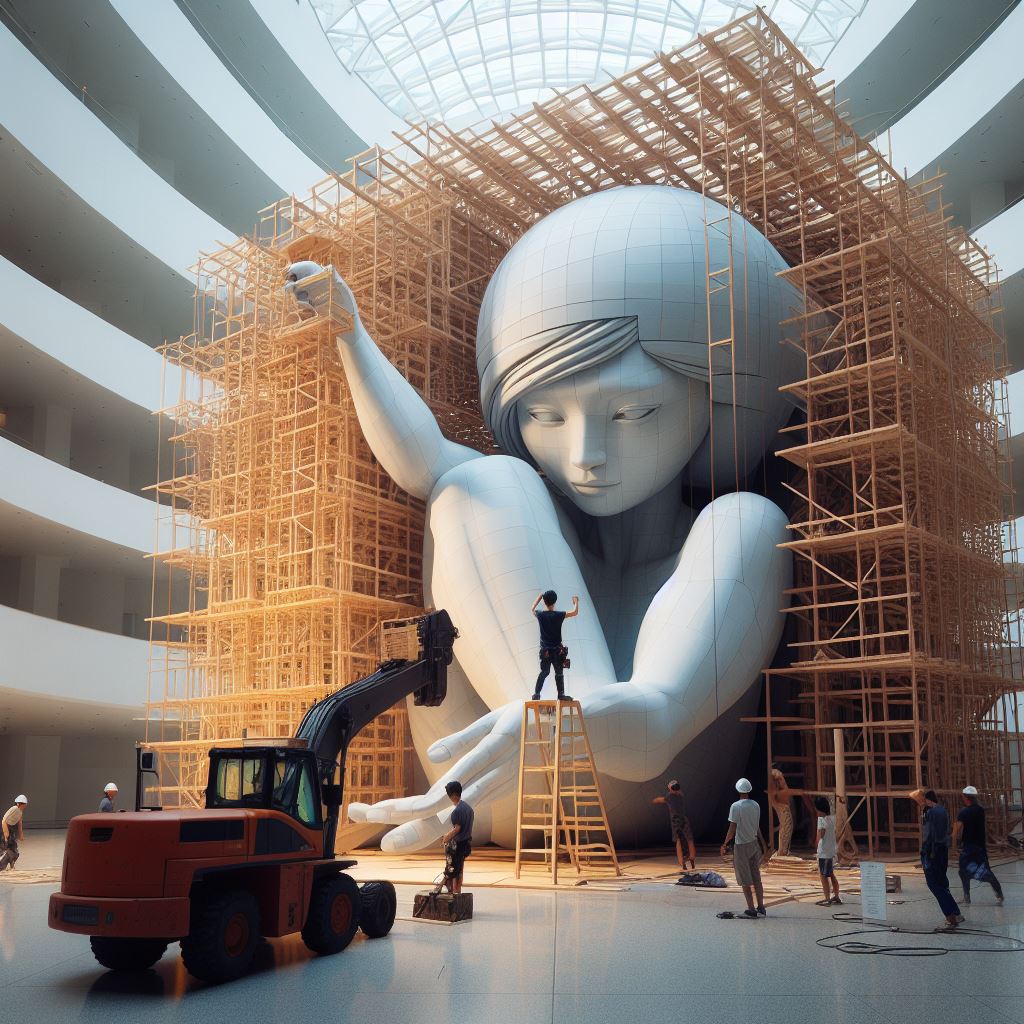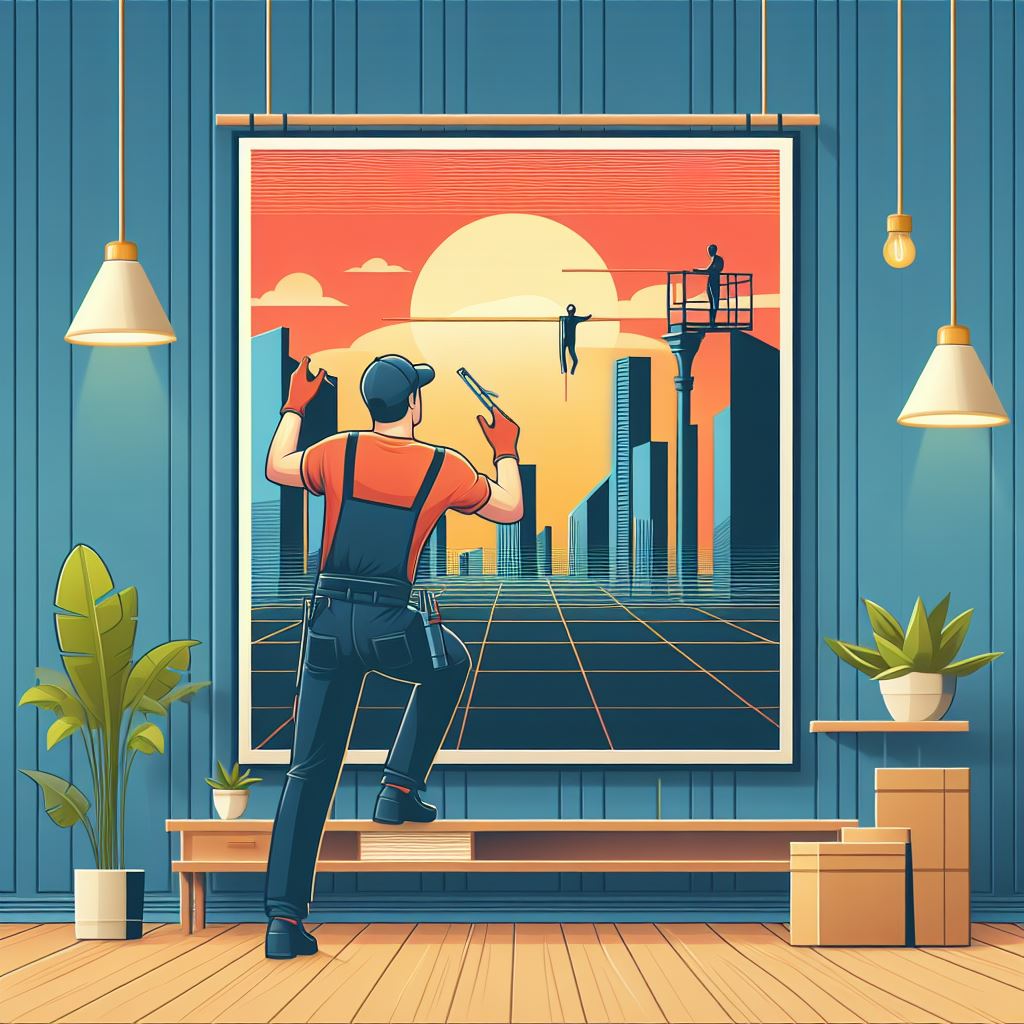What Are Art Installations? Unveiling Creative Wonders!
Welcome to the dynamic world of art installations, where creativity knows no bounds and the physical space is transformed into an immersive experience. What are art installations? At their core, they are large-scale works that often occupy entire rooms or public places, designed to engage and provoke thought in the viewer. These installations can be temporary or permanent and are conceived to work within, react against, or transform the surrounding environment.
From the whimsical to the thought-provoking, art installations challenge our perceptions and question our relationship with space and material. Artists use a myriad of mediums—light, sound, natural elements, and innovative technology—to create these captivating wonders. The creative impact of these works is palpable, often leaving a lasting impression on their audiences and transforming the ordinary into the extraordinary.
Need Help With Your Corporate Art Installation? TyArt has over two decades of specialized experience in the Houston area. Our team’s expertise ensures that your art installations are handled with the utmost care and professionalism. For inquiries about our art services in Houston, please reach out to us at tyart.com or call 713.869.4044.
The Evolution of Art Installations Throughout History

The concept of art installations has evolved remarkably throughout history, tracing back to the early 20th century when artists started to break the conventional norms of traditional gallery paintings and sculptures. The Dada and Surrealist movements, with artists like Marcel Duchamp and Salvador Dalí, paved the way for the recognition of installations as an art form, challenging the boundaries between art and life.
As the 20th century progressed, movements such as Minimalism, Conceptual Art, and Land Art further expanded the possibilities of art installations. Artists like Donald Judd and Walter De Maria played with space and materials to create environments that required viewers to engage with the art in a physical and contemplative manner. By the 1970s and 1980s, artists such as Christo and Jeanne-Claude, and later, Olafur Eliasson, began to create large-scale environmental works, transforming both urban and rural landscapes into artistic spectacles.
The digital revolution brought forth a new wave of interactive installations, utilizing technology to create multisensory experiences. These contemporary works often incorporate video, digital projections, and virtual reality, inviting viewers to become part of the art piece itself. The evolution of art installations is a testament to the ever-changing landscape of artistic expression and the limitless potential of creativity.
Understanding the Different Types of Art Installations
Art installations come in various forms, each offering a unique experience and engaging the audience in different ways. One can categorize installations based on the environment they occupy, the materials used, their interactivity, and the duration of their display.
Site-specific installations are designed to exist only in the space for which they were created, often forming a relationship with the location’s architecture or history. Conversely, modular installations are adaptable to various spaces, offering a more flexible approach to installation art.
Materials used in installations can range from everyday objects in found object installations to natural elements in earthworks. Immersive installations envelop the viewer in the artwork, creating a comprehensive sensory experience, while interactive installations depend on the audience’s involvement to activate or complete the piece.
Another dimension to consider is the temporal aspect: permanent installations are built to last and become part of a collection or landscape, while temporary installations might exist for a moment or for a specific event, emphasizing the ephemeral nature of art.
Understanding the different types of art installations is crucial for appreciating the context and intention behind each work, providing a deeper connection between the viewer and the art.
The Role of Space in Shaping Art Installations

The intricate relationship between art installations and their spatial environment is a fundamental aspect of their impact and meaning. The role of space in shaping an installation can influence the viewer’s perception, movement, and emotional response to the art. Artists must consider the scale, proportion, and context of the location to ensure that the installation complements or thoughtfully contrasts its surroundings.
Indoor installations often interact with architectural features, using the ceiling height, wall space, and lighting conditions to create an intimate or dramatic effect. Outdoor installations, on the other hand, engage with the landscape, weather, and natural light, which can transform the artwork over time and create a dynamic viewing experience.
In public spaces, installations have the power to disrupt the routine of daily life, offering passersby a moment of contemplation or surprise. These works can provoke public discourse and community engagement, connecting people to the space and to each other in new ways. The consideration of space is not only an aesthetic choice but also a strategic tool for artists to convey their message and evoke specific emotions within the viewer.
Ultimately, space is not just a backdrop for art installations; it is an active participant that shapes the narrative and experience of the artwork, making the understanding of spatial dynamics essential for both creators and admirers of installation art.
Experiencing Art Installations: What to Expect

When embarking on the journey to experience an art installation, visitors should anticipate an encounter that engages multiple senses and challenges traditional notions of art. Unlike viewing paintings or sculptures in the static environment of a gallery, art installations often invite—or even require—physical interaction and movement from their audience.
Expect the unexpected, as installations can range from serene, minimalist rooms that evoke tranquility, to overwhelming multimedia environments that bombard the senses with sound, light, and motion. The scale can be vast, sometimes encompassing entire rooms or outdoor spaces, allowing the viewer to walk through, around, and even become part of the artwork.
It’s not uncommon for installations to be temporally bound, existing only for a set period, which adds an element of impermanence to the experience. This ephemerality can provoke a sense of urgency to engage with the work, knowing that it may never be encountered in the same way again.
Interactive elements are also a hallmark of many installations, inviting the audience to touch, manipulate, or contribute to the artwork, thereby becoming an integral part of its existence. This interaction creates a personal connection between the viewer and the piece, making the experience subjective and unique to each individual.
As a visitor, it’s important to approach an art installation with an open mind, ready to participate, reflect, and embrace the full spectrum of emotions and thoughts that the artwork may inspire.
How TYart Facilitates Exceptional Art Installation Services

At TYart, facilitating exceptional art installation services is at the heart of what we do. Our dedicated team of art professionals brings over a century of combined experience to every project, ensuring that your vision is realized with the utmost care and precision. Whether you are a homeowner, business, or museum, we understand that the proper installation of your artwork is crucial to its impact and longevity.
Our services are comprehensive, covering every aspect of art installation. This includes meticulous planning, secure packing, careful transportation, and expert installation. TYart is equipped to handle a diverse range of art forms, from delicate paintings and photographs to large-scale sculptures and intricate installations.
No challenge is too great; we’ve relocated heavy dinosaur fossils and suspended thirty-foot tall sculptures, always with an unwavering commitment to safety and aesthetics. Our team works closely with clients to ensure that each piece is displayed to its best advantage, enhancing both the artwork and the space it occupies.
We take pride in our ability to adapt to the unique requirements of each piece and setting, providing personalized service that respects the artist’s intent and the collector’s needs. With TYart, you can trust that your art installation will be handled with the expertise it deserves.
Need Help With Your Corporate Art Installation? If so, TyArt is here to help. For years, we’ve been helping ensure that eye-catching art installations are safely and successfully put up. We have installed Corporate Art in the Houston area for over 21 years. If you have any questions about art services in Houston, please don’t hesitate to reach out to us today. We can be reached by calling 713.869.4044.



